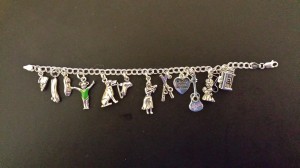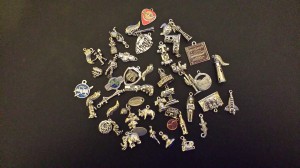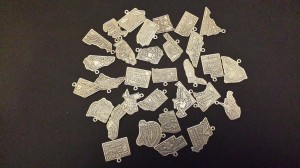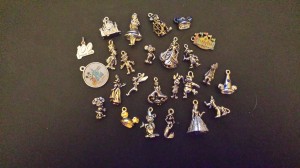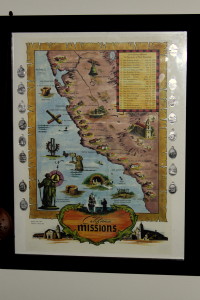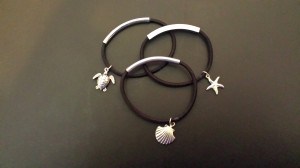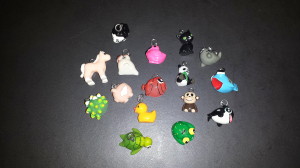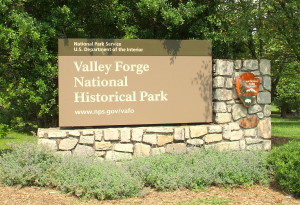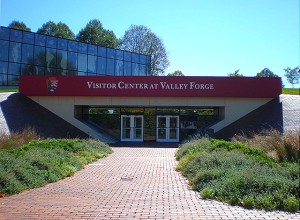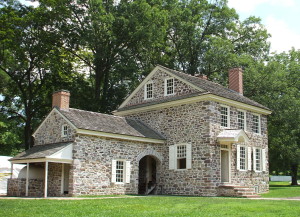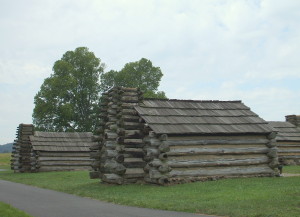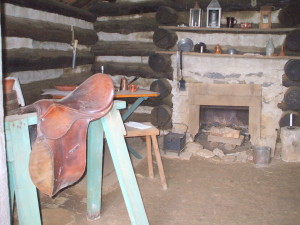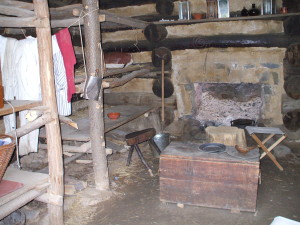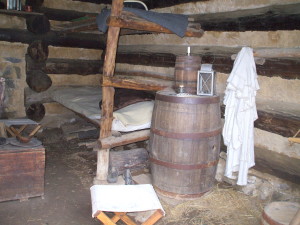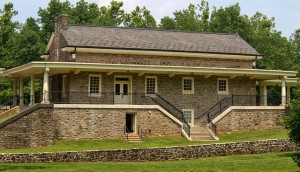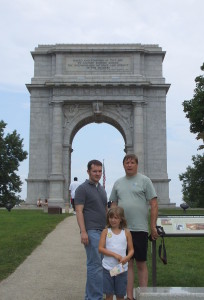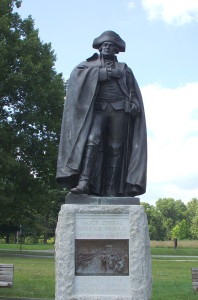Back in 1998, we were very fortunate to have visited the wonderful city of Krakow, Poland. My maternal grandparents emigrated from a small town located in southern Poland to the United States in the early 1900s. My mother was always been very proud of her Polish heritage. In researching my family history I have become fascinated with the great pride and resilience of the Polish people through the difficult years of both World Wars and how they held onto their religious beliefs and national customs even through years of political and social oppression. When we were visiting Germany a few years ago we decided to take a short trip to Poland specifically to see Krakow and to find the small village where my grandparents had lived before coming to America. I am so grateful I had this wonderful opportunity to visit the city of Krakow.
Krakow is located in the southern part of Poland and the city is located on the Vistula River near the Carpathian Mountains. Krakow is the second largest city after Warsaw and is one of the leading cities of Polish cultural and artistic life as well as an academic center of higher education and the city is also one of Poland’s most important economic centers. Over the centuries Krakow has seen many political and social changes and the city has been the capital of Poland several times under different governments.
This ancient “walled city” is one of the oldest cities in Poland. There is an old legend about the origin of the city and the fierce Dragon of Wawel Hill. According to Polish folklore, the Wawel Dragon lived in a cave at the foot of the hill near the bank of the Vistula River. The tale says that the evil dragon caused destruction and killed many farmers and the livestock in the nearby area. Eventually the villagers would one by one sacrifice the young girls of the village to appease the dragon’s ferocious appetite until only the King’s daughter remained. The King promised that if his daughter’s life was spared and the dragon was killed the victor would win her hand in marriage. The King’s brave and noble knights were sent out to kill the dragon but they all meet a fiery death. Then one day a humble cobbler’s apprentice rose to the challenge and he set out a poisoned lamb for the dragon to eat. The dragon became very thirsty and drank all the water in the nearby river until he ultimately died. The apprentice married the King’s daughter and … they lived happily ever after!
In another version of the story, the dragon was slain by a Polish Prince named Krakus who later became King and founded the city of Krakow, it is said that Wawel Castle was built on the site of the fabled dragon’s den. In 1970 a metal sculpture of the Wawel Dragon was placed in front of the legendary dragon’s den. The dragon is depicted as having seven heads and a natural gas nozzle was cleverly set into the mouth of the sculpture and goes off intermittently giving the illusion that the dragon is actually breathing fire.
The interesting sites in Krakow
Florian Gate
As visitors approach the area near the center of Krakow they will see a large stone gateway that was one of eight gates that were built in the 1300s as part of the defensive walls that were built for the city’s protection from invading forces. The adjoining wall and the two towers were also part of the original design but the upper section of the gate with the beautiful plaque of St. Florian were added at a later time.
To the north of the gate is the structure known as the Barbican that was built in 1498. A barbican is a fortified medieval fortress used as an outer defense for a city or castle which is usually connected to the city walls. This one is circular in dsiign and made of brick with walls that are almost a foot thick and at one time it was connected to the Florian Gate by a narrow passage that ran across a moat. The Krakow Barbican is one of very few surviving structures of this kind of medieval fortress in Europe.
Wawel Castle
Since Krakow was the political and cultural center of Poland over the centuries, ther has been a Royal residence on the site near the Vistula River. In the 11th Century, originally a smaller residence for the King had been built at this location but later it was redesigned into a larger Gothic castle by King Kazimierz III which was later burned down in 1429. The current castle was designed by Italian architects into an impressive three-story tall structure with an enclosed courtyard.
Over the centuries of political upheaval within Poland, the castle was repeatedly ransacked and vandalized by the Swedish and Prussian armies. Then during the Austrian occupation there were plans to turn the Wawel Castle into a citadel with army barracks with parade grounds and an massive brick wall was erected to incorporate the enter hill area surrounding the castle.
After World War I, restoration work began on Wawel Castle to repair centuries worth of damage to the original structure but was interrupted by the start of World War II when all work stopped. Eventually after the war, the restoration work resumed and today the castle has been fully restored on both the exterior and interior.
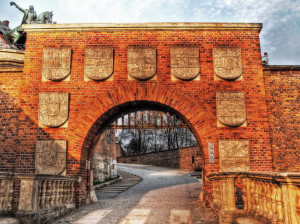
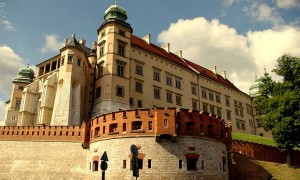
Travel Note: Currently Wawel Castle is a museum which offers a variety of tours that explore the five different sections of the castle. Limited English-speaking tours are offered daily and sell out quickly so it is a good idea to arrive early to purchase tickets or phone ahead for reservations. For more information, check out the website www.wawel.krakow.pl and be sure to click on the English icon at the top of the page for a translation from Polish to English.
Located nearby Wawel Casle and within walking distance are several more interesting sites.
The Dragon’s Den
Located on the west side of Wawel Hill is the Dragon’s Den. As I mention previously, there is an old Polish folktale about the Wawel Dragon and this is supposedly the location of the den of the dragon. The entrance to the Dragon’s Den is located at the base of the Thieves’ Tower of Wawel Castle and the cave is 885 feet long but currently only 265 feet are opened to the public.
The first area of the cave was filled with water until the 19th century and a narrow passage leads to the second and largest area of the cave. During the 17th and 18th centuries this section of the cave was used for storage for a tavern that was once located near the entrance by the Vistula River. The last part of the cave opened to visitors is where the main room of the tavern was located. As quest exit onto Vistula Blvd there is a metal sculpture of the Wawel Dragon created by Bronislw Chromy in 1972.
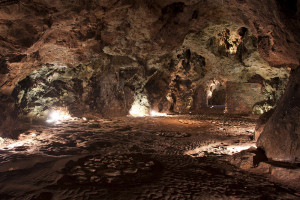
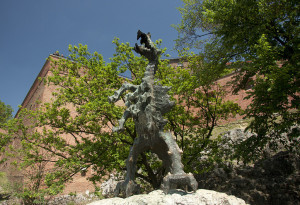
Wawel Cathedral
The official name of the Roman Catholic Church located on Wawel Hill is the Royal Basilica of Saints Stanislaus and Wenceslaus, but it is also known as the Wawel Cathedral. It was the church was built over 900 years ago and was traditionally the location for the coronation of the Polish monarchs. Since the 14th century, Wawel Cathedral is the burial site for the Polish monarchs and over time additional several burial chapels have been added to honor individual rulers. National heroes and military generals have also been buried in the crypt beneath the church. When entering the Cathedral from the west entrance through the large iron door, hanging on the left suspended from a chain are large prehistoric animal bones that were found on the site during the excavation process. It is said that the bones hold magical powers and as long as they are there the cathedral will remain.
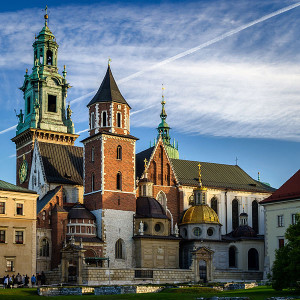
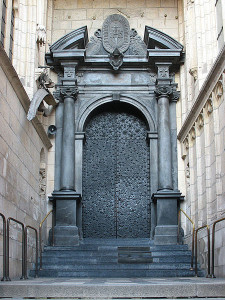
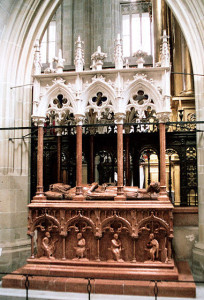
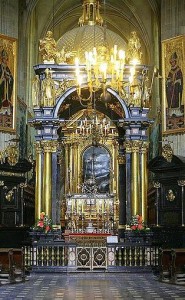
In more current history, it had a very important role in the life of Pope John Paul II. In 1946, known then as Karol Wojtyla, he was ordained as a priest and later in 1958 he was ordained as Krakow’s auxillary bishop. When the much beloved Pope John Paul II died in 2005, the people of Poland were hoping that the old custom of burying his heart in his homeland would take place in the Wawel Cathedral but instead he is buried in the traditional papal burial site in a crypt under St. Peter’s Basilica in Rome, Italy.
We thoroughly enjoyed our trip to southern Poland and Krakow, but unfortunately our visit was very short. We are definitely planning a return trip in a few years!!

